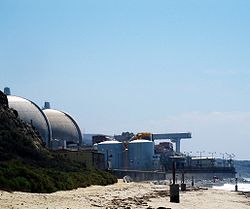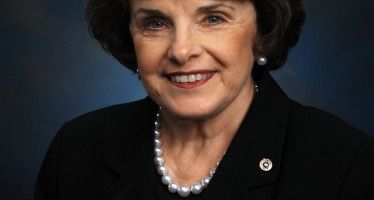Banning Nukes: $4 Billion CA Budget Hit
By JOSEPH PERKINS
It’s been 22 years since Rancho Seco nuclear power plant generated its last megawatt. The facility, 25 miles southeast of downtown Sacramento, was the casualty of a public referendum in which a majority of voters in the state’s capital city decided the plant should be shut down.
Ben Davis Jr., an anti-nuke activist, is credited with first suggesting the idea of idling Rancho Seco’s two reactors. Now, two decades later, the Santa Cruz resident has come out of retirement to gather signatures for a state ballot measure that would shutter California’s two remaining nuclear power plants — San Onofre in San Diego County and Diablo Canyon in San Luis Obispo County.
Rancho Seco’s closure cost its owner, Sacramento Municipal Utility District, some $660 million, a portion of which almost certainly was passed along to its ratepayers. It also permanently removed the nuclear plant’s 913 megawatts from the grid — capacity that, if fully utilized, was enough to serve most of SMUD’s business and residential customers.
The fallout from decommissioning both San Onofre and Diablo Canyon would be exponentially greater than Rancho Seco’s shut down. The two nuclear power plants generate 15 percent of California’s electricity. Removing that output from the state grid would have an impact on the state comparable to the electricity crisis of the early 2000s.
Electricity Crisis
Most California residents remember those bad old days.
Because state utilities could not generate enough electricity to meet growing customer demand, the utilities had to purchase megawatts from out-of-state providers at markups of us much as 2,000 percent.
Yes, there was evidence of market manipulation by out-of-state electricity providers. But those providers would not have been able to get away with their alleged price gouging if California was not so reliant on imported electricity; if the state’s utilities had been generating enough megawatts to meet homegrown demand.
Davis, described as “eccentric, stubborn” by one of his friends in California’s anti-nuke community, has obviously ignored the lesson of the early 2000s. His ballot measure is predicated on the dubious notion that California can readily replace the electricity generated by San Onofre and Diablo Canyon by erecting more solar arrays and building more wind farms.
California’s non-partisan Legislative Analyst’s Office disagrees. In a recent report, it notes that nuclear power supplies “base load” energy to the state’s electricity grid. What that means is that, unlike solar and wind, which are intermittent sources of megawatts, nuclear provides a reliable, uninterrupted power source.
If Davis somehow succeeds in removing San Onofre’s 2,350 megawatts and Diablo Canyon’s 2,240 megawatts from the grid, residents throughout the state can look forward to regular rolling blackouts, the LAO warns.
Meanwhile, decommissioning California’s two remaining nuclear power plants will drive up electricity rates from Sacramento to San Diego.
Part of that is simply a matter of supply and demand. If the state eliminates 15 percent of its electricity output, prices are certain to climb. The other part is that the anti-nuke community will insist that the lost 15 percent be replaced by solar and wind. Those renewable energy sources cost more than twice as much per kilowatt hour as nuclear.
$4 billion Budget Hit
Then there’s the very real possibility that Southern California Edison and San Diego Gas & Electric, owners of San Onofre, and Pacific Gas & Electric, owner of Diablo Canyon, could seek compensation from the state of California for the losses incurred by the involuntary shut down of their plants. The LAO’s Office estimates that the losses could total more than $4 billion.
None of the costly scenarios laid out by the LAO, or by pointy headed opinion writers like yours truly, matters to Davis and California’s anti-nuke zealots. If they can shut down the state’s last two nuclear power plants, they are quite willing to subject California residents to the nation’s highest electricity rates.
Related Articles
Is the Budget Kabuki Dance Ending?
MARCH 31, 2011 By KATY GRIMES The budget dance between the Republican legislators and Democratic Gov. Jerry Brown appears to
Does the CA Election Really Matter?
OCT. 21, 2010 By JOHN SEILER On Nov. 2 Californians face the most important election in decades, deciding the governorship,
CA Dems’ congressional delegation on borrowed time
Statewide, California Democrats enjoyed another dominant Election Day. But at the national level, a much different reality has set in for




